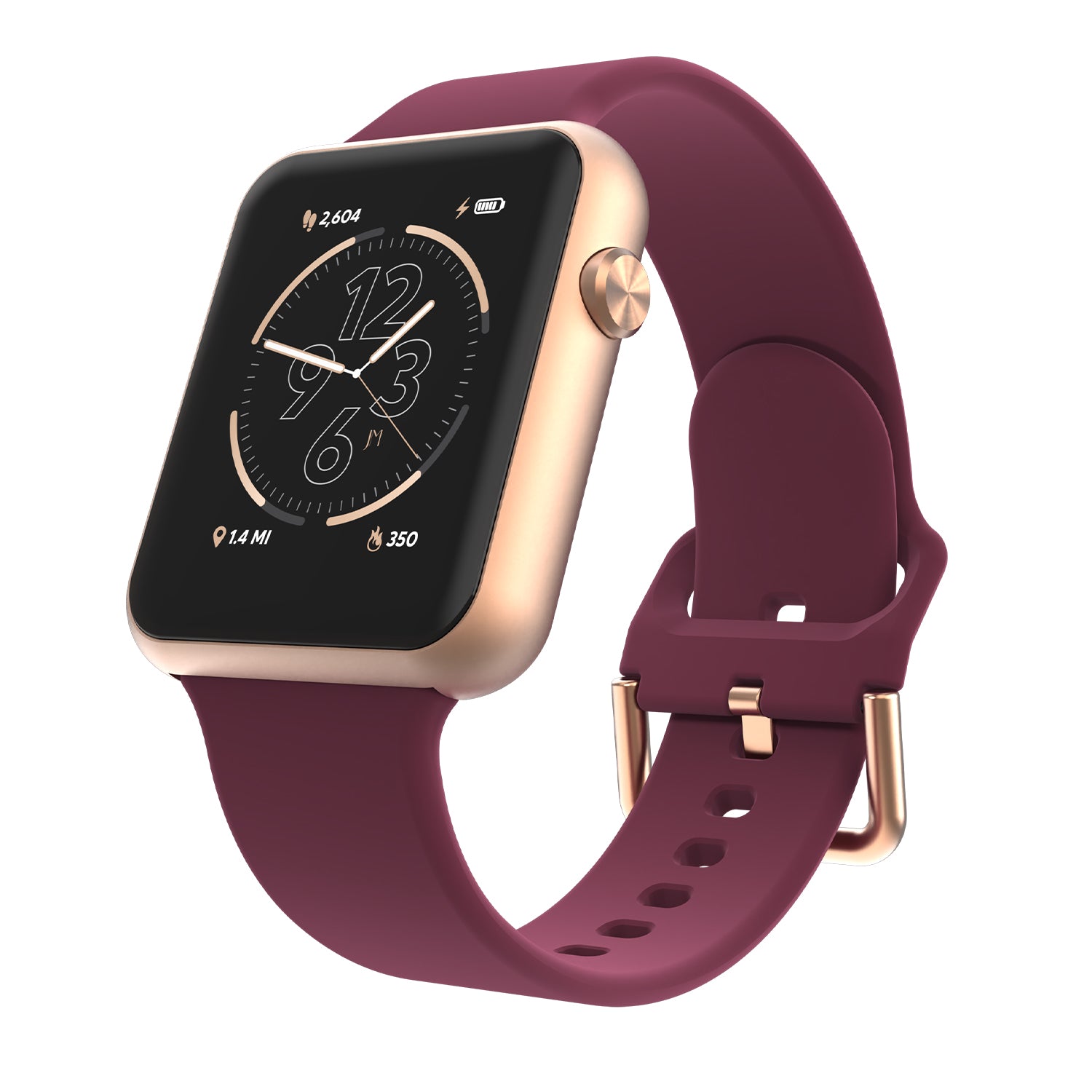Autumn not only brings in cooler weather and falling leaves, but it also ushers in a new conglomerate of produce into our local grocery stores. So, as the leaves change, so does the produce section of grocery stores and farmers' markets.
Although I am personally not a fan of the cooler temperatures blown in by Fall, I can get behind the bounds of new produce added to the shelves. This new produce makes cooking (and eating) a little more interesting. Plus, since most of us have grown more familiar with our kitchens due to the COVID-19 quarantine, I believe that exploring new Fall produce options will be particularly interesting this year.
Since a new set of produce has probably already made its way into your local grocery store, I have compiled a list of major fall produce items, identified their variations, and provided suggestions on how to pick them at their ripest. I hope this list helps you navigate these new additions to your grocery store and inspires you to try some new produce this season.
Apples

Apples are a quintessential Fall produce item that tend to be eaten year-round; but most varieties are the ripest during the Fall.
Varieties: The number of apple variations are countless. So, I have taken the liberty of compiling a list of the most common apple variations you are likely to come across and pair them with their characteristics and best uses in the chart below.
|
Type of Apple |
Characteristics |
Sweet/Tart? |
Best Uses |
|
Fuji |
Yellow-green base with strong red-pink striping throughout. Firm, juicy, crisp. |
Sweet, slightly tart flesh |
Good for baking as they hold their shape and eating raw. |
|
Red Delicious |
Dark red, tall conical shape. Skin can be tough, flesh is light, crispy, and juicy |
Sweet, but mild |
Fresh preparations only because flesh does not hold up well when cooked |
|
Golden Delicious |
Pale green to golden yellow in color. May have some specks. Firm, crisp, white flesh. |
Sweet-tart aromatic flavor. "Honeyed" flavor. |
Good for baking and eating raw. |
|
Gala |
Dark orange/yellow skin with red highlights. Crisp, mild. Dense flesh. |
Sweet |
Best for applesauce, pressing into cider, and eating raw. |
|
Honey Crisp |
Bright pink/red with pale green stripping. Crisp, sweet, juicy. |
Sweet |
Fantastic apples for eating raw. Also good for baking and apple sauce. |
|
Pink Lady |
Vivid green with pink and red sections. Crunchy texture. Offers a "fizz-like" burst of flavor. |
Somewhat tart. A sweet note at the end. |
Extremely versatile. Can be used for anything. |
|
Empire |
Primarily red, some pale green spaces and stripping. Firm-textured. A cross between McIntosh and Red Delicious. |
Sweet-tart |
Extremely versatile. Can be used for anything. |
|
McIntosh Red |
Red and green skin. Refreshing flavor. Crunchy, mealy, and creamy flesh. |
Tart |
Extremely versatile. Can be used for anything. |
|
Granny Smith |
Solid light-green flesh, somewhat sour, and crispy. |
Very tart, almost tangy flavor |
Extremely versatile. Note: Best when paired with sweeter apples for baking/cooking applications. |
How to pick: The number of apple variations in the grocery store can be overwhelming, but choosing a perfectly ripe apple is far less intimidating. Regardless of variety, all apples should be firm to the touch, with no bruising or soft spots. You may even want to lightly press on the apple to ensure that it is not too soft. Color is not the best indicator of the ripeness of an apple, but it can help. Apples with full color on all sides are best because they have absorbed lots of sunlight which translates into great flavor.
Leeks

A unique fall vegetable that is often overlooked are leeks. If you are unfamiliar with this vegetable, it has a mild taste, similar to an onion, and is often used in soups and as a topping for salads and pizza.
Varieties: There are only two varieties of leeks. One being the light green-leafed leeks you see in the image above. This is a faster-growing variety that primarily grows in the Fall. And, the other being, blue-green winter leeks that are much heartier. It is unlikely that a distinction will be made between these two different varieties in grocery stores as most people are unaware that leeks even have two different varieties. But, now you are an expert on leek varieties!
How to pick: To pick the ripest leek, ensure that the stalk is crisp, firm, and the leek has as much white and light-green as possible. Avoid leeks that are withered or have yellow tops. These leeks are not at their peak of freshness. Also, avoid leeks that have too much dark green as these leeks are also not as fresh. The smallest leeks have proven to be the tastiest. So, if possible, opt for purchasing two small bundles, instead of one large bundle!
Sweet Potatoes

Sweet potatoes are my personal favorite Fall produce item. There are so many ways to prepare this delicious Fall produce item, but my favorite way to prepare sweet potatoes is roasting them in the oven with olive oil, rosemary, salt and pepper. This simple, yet tasty preparation is the perfect snack or side-dish.
Varieties: When visiting your local grocery store, you're most likely going to encounter 3 different types of sweet potato varieties. The most common sweet potato variety are Beauregards which tend to be labeled as just “sweet potatoes.” They have purplish-red skin, a deep orange interior, and are juicer than other sweet potato varieties. There are also Jewel sweet potatoes which can be identified by their light orange (almost brown) flesh. Jewel sweet potatoes hold a lot of moisture, but are not quite as sweet as Beauregards. Finally, there is the Garnet sweet potato, which is characterized by its dark orange, red-ish skin. They're sweet, flavorful, and moister then jewels or Beauregards.
Fun fact: You may have heard of sweet potatoes referred to as yams, but this is actually incorrect as a true yam is a starchy, white flesh tuber. But, you may see sweet potatoes labeled as yams, because in the 1930s Louisiana farmers marketed their orange-fleshed potatoes as yams to distinguish them from other states' potato varieties and the name stuck!
How to pick: Picking the perfect sweet potato is an easy feat as most sweet potatoes available at the grocery store are ripe and delicious. A perfectly ripe sweet potato has firm, even-toned, smooth skin and is small/medium in size. Extremely large sweet potatoes may be tempting to purchase, but they tend to be starchier and less sweet than their smaller counterparts. It is also important to note that the deeper the color of the sweet potato, the richer it is in beta-carotene (an antioxidant that converts into vitamin A in the human body). As you can see, few details need to be considered when grabbing a few sweet potato to purchase, so don't sweat the details when picking this fall starch.
Winter Squash

Squash is an earthy-flavored vegetable that has Summer and Winter varieties. Summer squash varieties are typically in season from June to September and winter squash varieties are available during early Fall to late Spring. Technically speaking, a squash is a fruit, but tends to be prepared with savory seasonings, similar to a vegetable.
Winter squash varieties have hard, thick skins and seeds, and are high in vitamin A, vitamin C, iron, and riboflavin. The flesh of winter squash is also firmer than the flesh of summer squash and requires longer cooking.
Fun fact: A pumpkin is technically a winter squash.
Varieties: There are numerous varieties of winter squash, but I have taken the liberty of outlining the top 4 most popular winter squash varieties that you are most likely to come across. First, there is the sugar pumpkin, which comes in a variety of colors and looks just like the traditional pumpkin used for carving. It is smooth, round squash that is not too sweet, and not to dry. Experts say it is the perfect "gateway" into the world of winter squashes. Secondly, there is butternut squash which is a beige colored squash with a bulbous bottom and a tube-like neck (see image above). It is sweet, thin-skinned, and not too sugary. There is also acorn squash which is shaped like an acorn (hence, its name) and has dark green skin. It is savory, nutty, and tends to be on the dry side. And, lastly, there is spaghetti squash which is an oblong, light yellow squash that creates thin noodle-like strands when cooked. It is also important to note that in addition to these winter squash varieties there is also a number of Summer squash varieties, such as zucchini, crookneck squash, and cousa squash.
How to pick: Picking the perfect squash is very simple and does not change for each variety. The squash should be heavy, hard, and its skin should be blemish-free. Similar to when picking sweet potatoes, opt for winter squashes that are smaller in size as their flavor tends to be much better!
Pro Tip: If you are feeling adventurous, try squash blossoms. They are the flowers from certain squash species and are harvested from the vines that squashes grow on. Their texture is delicate and soft and their flavor is loosely similar to the squash itself. They typically come in small pre-packaged plastic containers and are found in the produce section. To prepare these delicious blossoms, you can fry them, stuff them with a creamy cheese, like ricotta or marscapone, or even use them as a garnish!
As you can see, there are some amazing fall produce options that you can sink your teeth into this season. Share your fresh Fall produce with us on Instagram & Facebook @itouchwearables. Also, be sure to check out our new articles published daily and the latest styles on iTouchWearables.com!
-Lauren








